IV Infiltration
As a nurse working in the pediatric department you are required to place an IV in a five-month old baby boy. IV insertions in infants can be difficult and may lead to complications like infiltration and extravasation, calling for great care and expertise while performing the insertion.
In this VR simulation, learners practice in realistic scenarios to perform an insertion and take necessary steps required to address a PIV extravasation.
- Demonstrating the steps of PIV assessment using the acronym ACT
- Modelling the use of vein finding technology
- Demonstrate performing PIV insertion and securement
- Demonstrating the steps required to address PIV extravasation
- Demonstrating steps of PIV assessment using vein finding technology
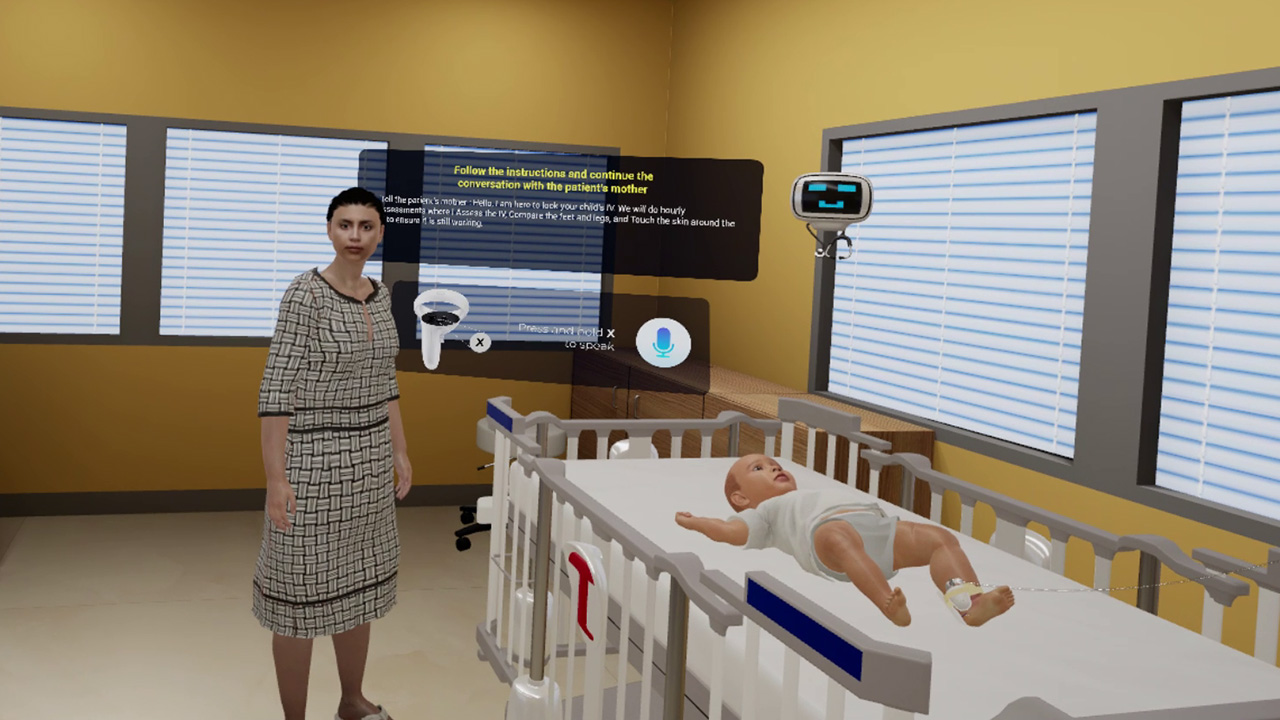
Developed in partnership with the clinical team of Children’s Health, Dallas, Texas.
Customize Your Program
Get rid of the editor. Adopt in-VR customization.
MedVR Education is bringing to you in-VR customization that will enable you to customize your procedural simulations by making selections from a range of feature choices.
- Select patient from a diverse background
- Choose preferred virtual environment
- Select equipment used in the procedure
- Modify difficulty level of the assessment mode
- …..many more to come
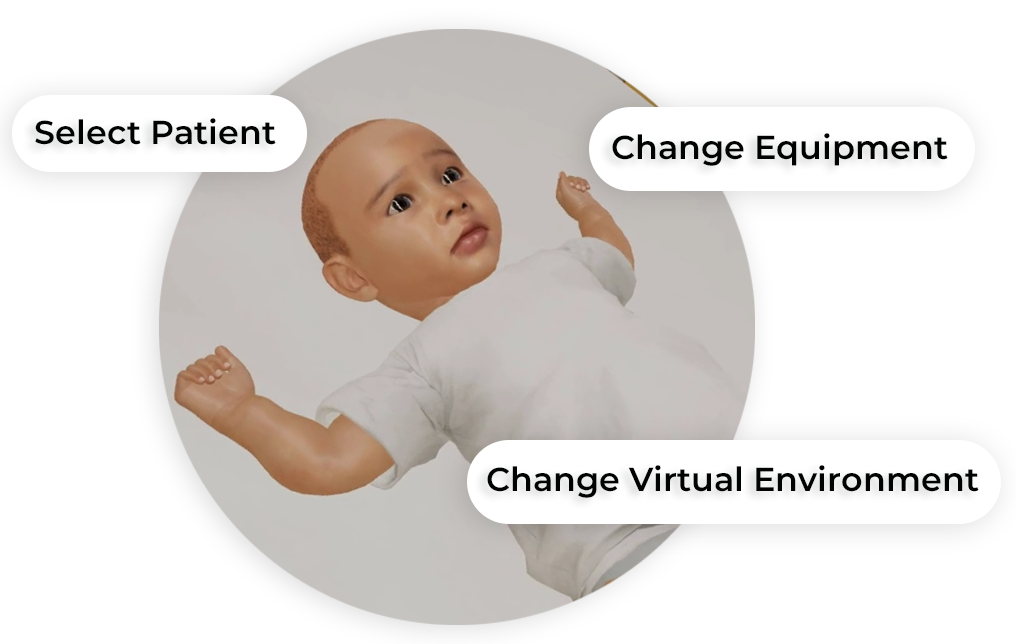
 Physics-Based Interaction
Physics-Based Interaction
Core Skills Training
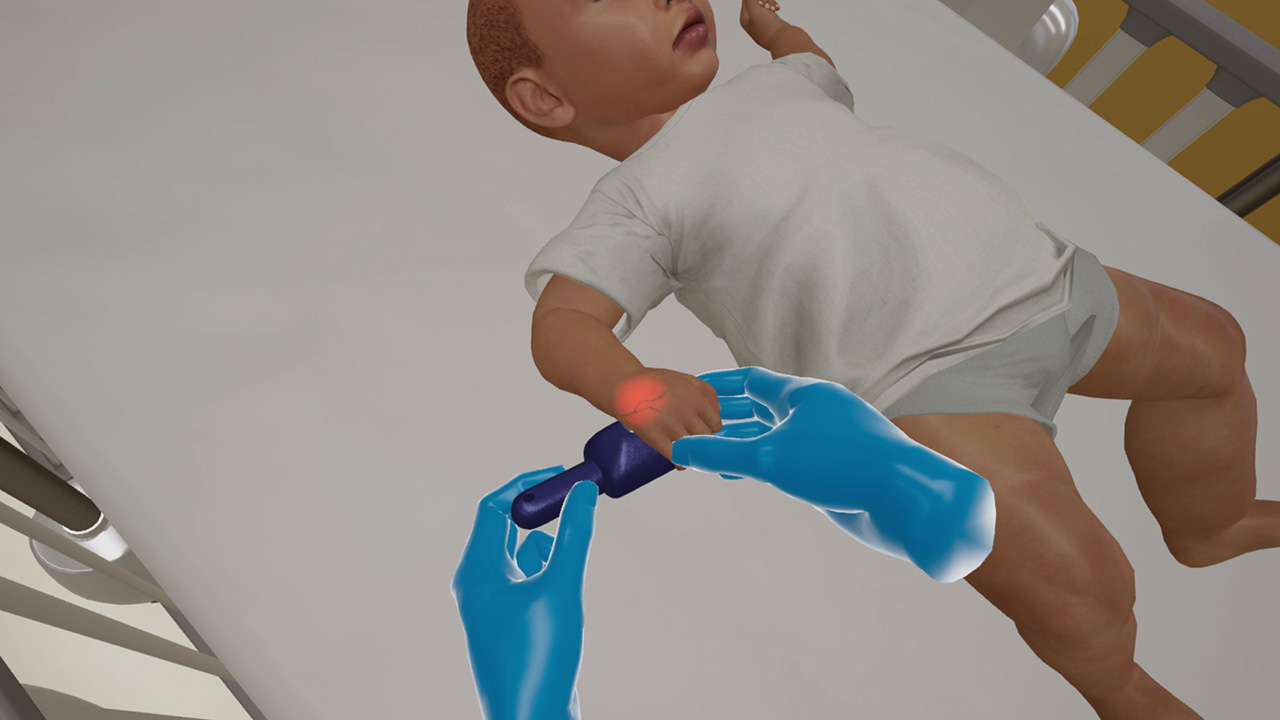
Vein Selection and Preparation
While selecting a vein for insertion, it is worthwhile to take into consideration factors like the length of time the IV would be required and the position of the vein. In case of children the forearm region of the non-dominant hand is preferable as it allows the freedom to use hands for writing, playing, etc. In this module, learners will practice conversing with the patient, using a vein finder to locate a suitable vein for insertion and identifying the insertion site. Appropriate affordances and detailed instructions are provided all along for a smooth practice session.
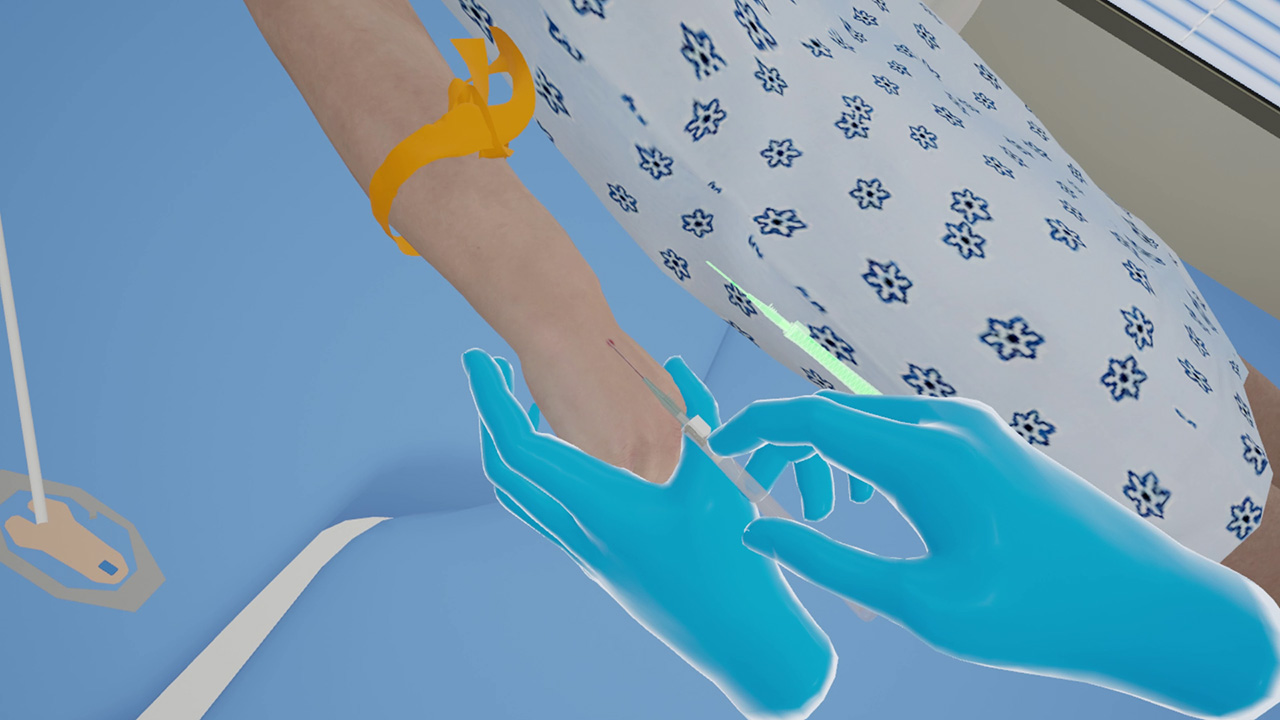
PIV Insertion and Dressing
The insertion is performed after having confirmed the patient’s details and the insertion site confirmed. Palpating the vein can help in better visibility and ease the insertion process, causing minimum discomfort to the patient. This module allows learners to practice the insertion procedure on a virtual child. The procedure involves administering anesthesia to the patient at the insertion site, using a guiding needle to introduce the needle into the vein, advancing the catheter into the vein, and connecting it to a T-connector.

Performing ACT Assessments
Routine check of the insertion site is important to keep a tab on the proper functioning of the IV. An ACT assessment helps prevent undesired circumstances and works towards upkeeping the health and safety of the patient. ACT stands for Assess hourly, Compare hourly and Touch hourly. This is done even if the patient is sleeping. In this module, learners will do an ACT assessment of virtual pediatric patients. Detailed instructions are provided to help assess and draw appropriate conclusions of patients’ conditions and decide upon the next course of action.
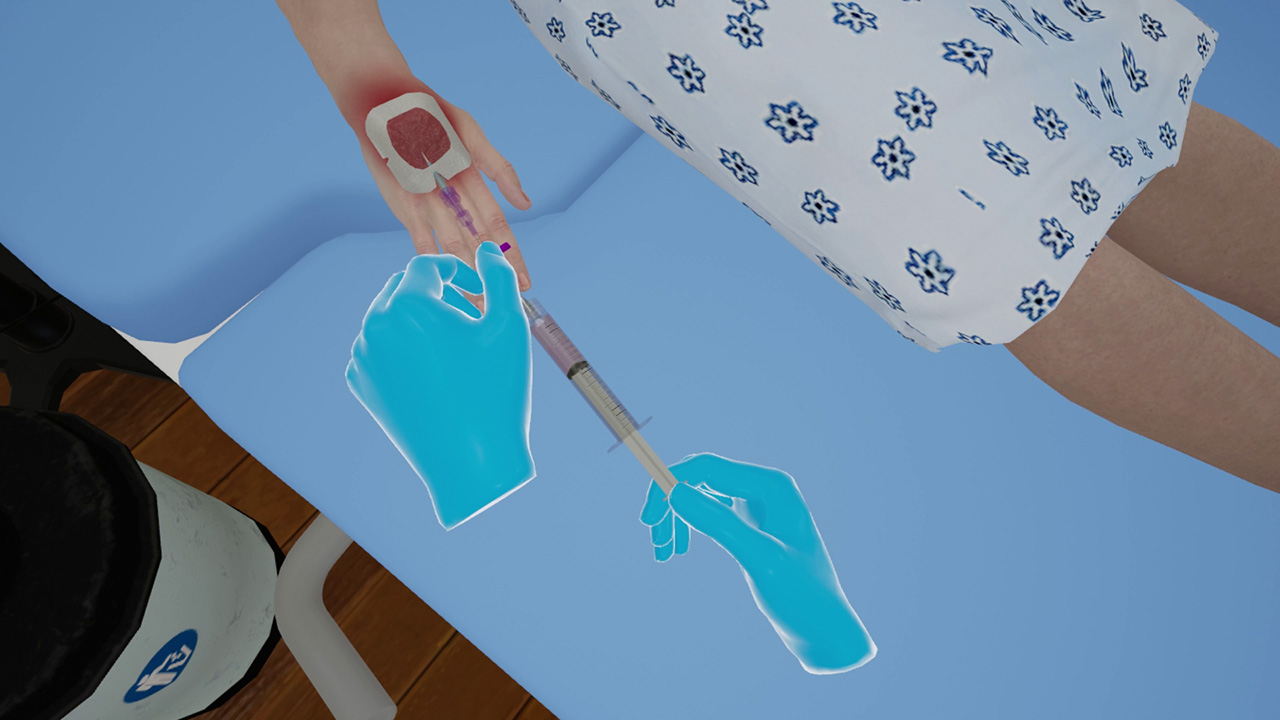
Complications
Depending upon the nature of the complication, a classification is done and documented as phlebitis, infiltration, or extravasation. This helps decide upon the course of treatment to be followed to alleviate the condition. In this module, learners will observe relevant skin changes and follow the treatment plan prescribed by the provider. Detailed instructions with appropriate affordances are provided at each step to assist learners in performing the procedure efficiently and take appropriate actions in event of complications.
Training
With prompts, guidance and affordances learners are hand-held through the process to practice the procedure in a virtual environment with a virtual patient.
- Photorealistic virtual environment
- Physics-based interactions
- Detailed instructions
- Adequate affordances to assist in task completion
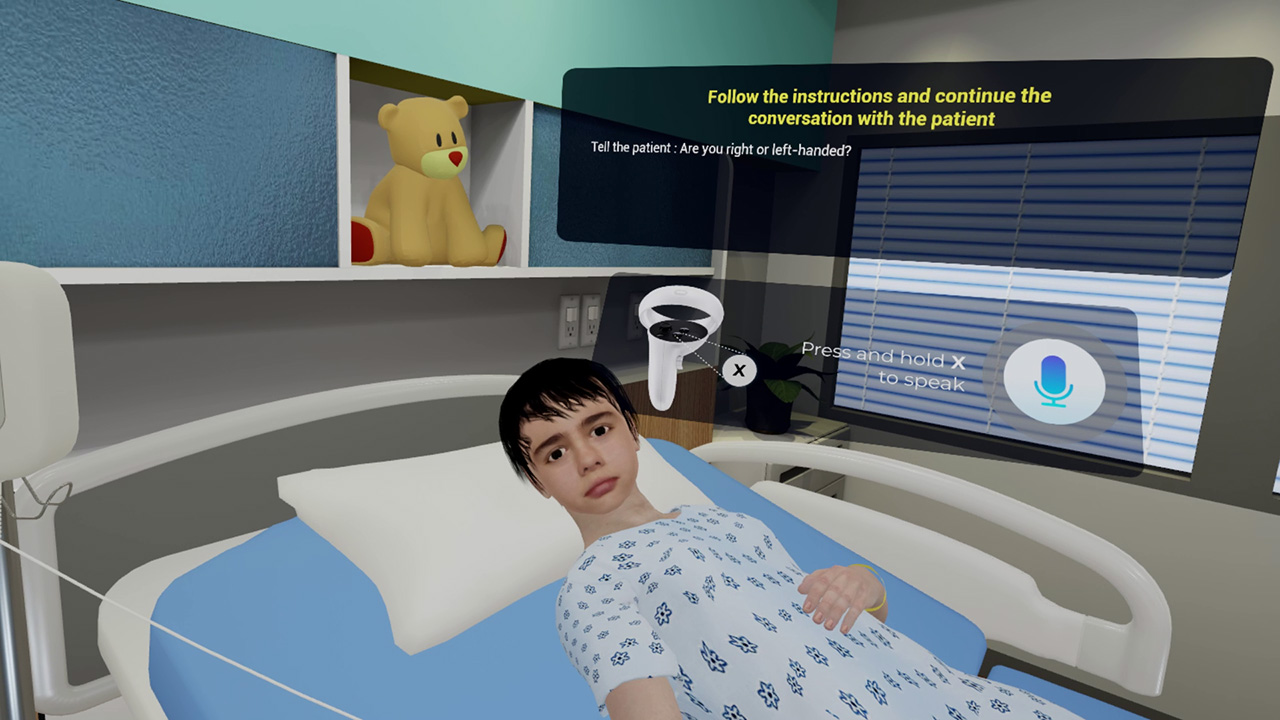
Assessment
Test acquired skills to perform the procedures from start to finish without prompts. An incorrect step will take the learner back to the start to start afresh.
- Live scoring
- Instant feedback
- Adequate affordances for efficient performance
- Time tracking to monitor activity completion







